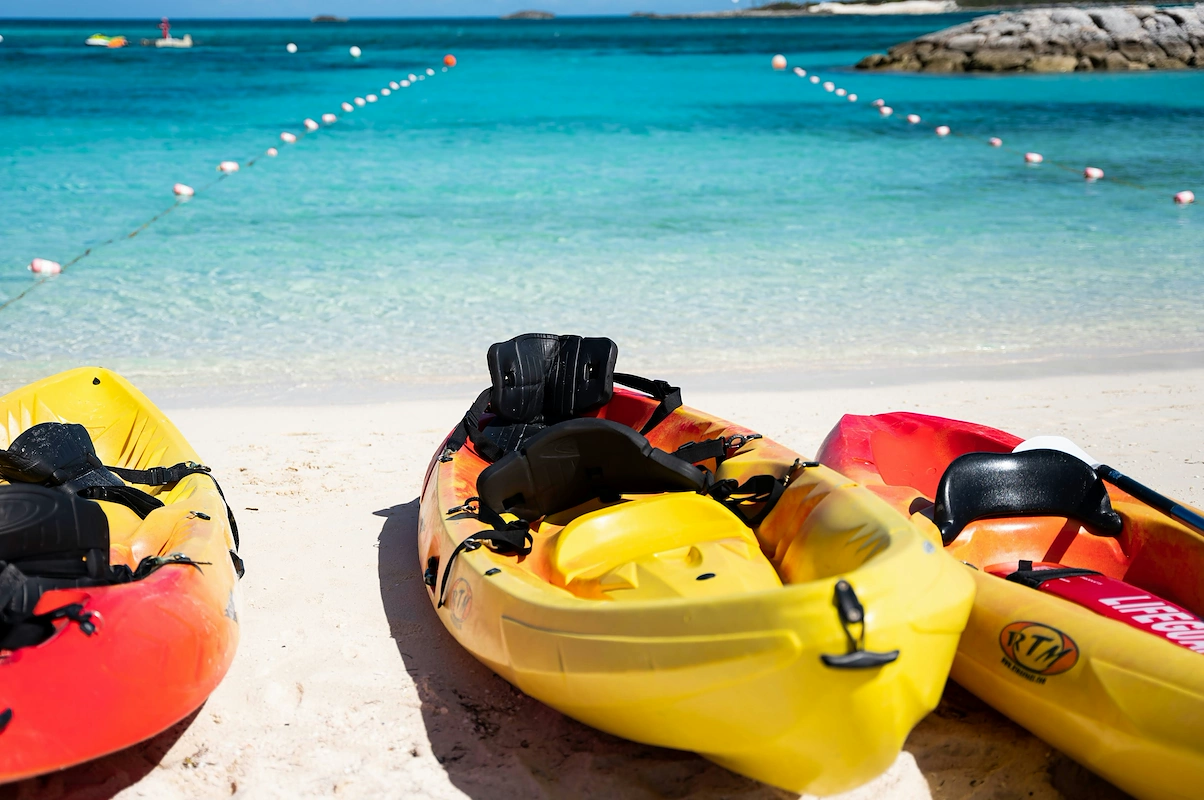Starting a corporate travel business is a rewarding venture that blends a passion for logistics and negotiation with sharp business savvy. With the global market valued in the hundreds of billions, there is consistent demand for travel coordination for sales teams, executive trips, and international assignments.
This guide will take you through the practical steps of validating your business concept, securing funding, obtaining necessary licenses, and building supplier relationships to help you launch a successful corporate travel business in the U.S.
Step 1: Plan your business and validate the market
Define your niche and research the market
First, decide who you will serve. Will you focus on tech startups with frequent international travel or local firms needing regional trip management? This choice directs your service offerings. You can gauge demand by surveying HR managers at local companies or analyzing industry reports from the Global Business Travel Association (GBTA).
Estimate your startup costs
Initial investment can range from $5,000 to $20,000. Key expenses include business registration and Seller of Travel licensing, which can cost up to $2,000. Technology is a significant part of the budget. Access to a Global Distribution System (GDS) like Sabre or Amadeus can run from $2,000 to $10,000.
A detail people often overlook is that direct GDS access requires industry accreditation. Many new agents start by working with a host agency to bypass this initial hurdle and reduce costs. Also, set aside at least $1,000 for Errors and Omissions insurance to protect your business.
Here are 3 immediate steps to take:
- Identify three potential corporate client profiles in your area.
- Compare the costs of joining a host agency versus getting direct GDS accreditation.
- Draft a preliminary budget that includes licensing, technology, and insurance estimates.
Step 2: Set up your legal structure and get licensed
Choose your business structure
You should consider forming a Limited Liability Company (LLC). It protects your personal assets from business debts. For tax purposes, an LLC offers pass-through taxation, meaning profits are taxed on your personal return, which simplifies filings.
Once your business is registered with your state, get an Employer Identification Number (EIN) from the IRS. It’s free and the application on the IRS website takes minutes. You will need this for banking and taxes.
Secure the right travel licenses
This brings us to state-specific rules. Five states require a Seller of Travel license: California, Florida, Washington, Hawaii, and Iowa. Costs range from $50 to over $500, and processing can take a few weeks to a couple of months.
Many people assume the license is only for your business's home state. However, you often need a license in the state where your client resides. Check the requirements for every state you plan to do business in to avoid fines.
Here are 3 immediate steps to take:
- Decide on an LLC and file the paperwork with your Secretary of State.
- Apply for a free EIN on the IRS website.
- Identify which Seller of Travel licenses you need based on your location and your potential clients' locations.
Step 3: Secure insurance and manage risk
Key insurance policies to consider
Your first priority should be Errors & Omissions (E&O) insurance. This policy protects you from liability if you make a mistake, such as booking an incorrect flight date. A simple error can cost your client thousands, so this coverage is non-negotiable.
You should aim for a policy with at least $1 million in coverage. Annual premiums often fall between $500 and $2,500. Some new agents choose lower coverage to cut costs, but a single large claim could put you out of business. It is not a corner worth cutting.
In addition to E&O, consider General Liability insurance to cover third-party property damage or injury. If you hire employees, you will also need Workers' Compensation insurance, as it is required by law in nearly every state.
You might want to get quotes from insurers who specialize in the travel industry, like Berkshire Hathaway Travel Protection, Aon, or Travel Insured International. They understand the unique risks of supplier defaults or travel disruptions better than a general agent.
Here are 3 immediate steps to take:
- Request quotes for a $1 million Errors & Omissions policy.
- Compare premiums from at least two travel industry insurance specialists.
- Determine if you need General Liability or Workers' Compensation based on your business plan.
Step 4: Set up your operations and technology
Establish your workspace
You can run a corporate travel business from a home office, which keeps overhead low. Most residential zoning allows for this type of work. A dedicated space of 100-150 square feet is usually enough for a desk and files.
If you prefer a separate location, a small executive suite or co-working space works well and helps you avoid a long-term lease. When reviewing options, clarify what is included, like internet and utilities, as these are often bundled.
Assemble your technology
Your technology is your primary equipment. Instead of direct GDS access, you can use the tech suite from your host agency. This package often includes booking portals and a CRM for a monthly fee, typically $50 to $400.
Some new agents get tempted by flashy, expensive software. A better approach is to start with the basics. You can build a powerful, low-cost stack yourself with a free CRM like Zoho or HubSpot to manage client data from day one.
For creating professional itineraries, consider a subscription to a service like Travefy, which costs around $40 per month. It lets you build clean, mobile-friendly travel plans that impress clients and keep them organized on the road.
Here are 3 immediate steps to take:
- Decide if a home office or co-working space fits your budget.
- Review the technology packages offered by your top three host agency candidates.
- Sign up for a free version of a CRM and an itinerary builder to test them.
Step 5: Set up payment processing
Corporate clients often expect net-30 payment terms, so you will invoice them with payment due in 30 days. For new clients or large group bookings, it is standard practice to require a deposit upfront. This protects your cash flow while you secure reservations.
When you select a payment processor, pay close attention to transaction fees. Many providers charge 2.5% to 3.5% plus monthly fees, which can eat into your commissions. Look for a solution with transparent, low rates and no long-term contracts.
For corporate travel businesses that need to accept payments on-site or on-the-go, JIM offers a streamlined solution. With JIM, you can accept debit, credit, and digital wallets directly through your smartphone. Just tap and you are done.
At just 1.99% per transaction with no hidden costs or extra hardware needed, it's particularly useful for collecting service fees or deposits during an initial client consultation. This rate is significantly lower than what many other payment solutions offer.
- Get Started: Download the JIM app for iOS.
- Make a Sale: Type the sales amount, hit sell, and ask your customer to tap their card or device on your phone.
- Access Funds: Your money is available right on your JIM card as soon as the sale is done - no waiting for bank transfers.
Here are 3 immediate steps to take:
- Outline your payment terms, including deposit requirements for new clients.
- Compare transaction fees from at least two payment processors.
- Download the JIM app to see how it works for in-person payments.
Step 6: Fund your business and manage finances
Secure your startup funding
You will need capital to cover your first six months. A good target for working capital is between $10,000 and $25,000. This buffer covers expenses as you wait for client payments on net-30 terms, a common practice in corporate travel.
The Small Business Administration (SBA) is a great place to start. Their Microloan program offers up to $50,000. These loans come from nonprofit community lenders and often have more flexible qualification requirements than traditional bank loans.
You might also consider a business line of credit. It gives you flexible access to cash to manage uneven income streams. Interest rates typically range from 8% to 15%, depending on your credit. Many founders also use personal savings to get started.
Set up your financial systems
A mistake some new agents make is to mix personal and business finances. Open a dedicated business bank account as soon as your LLC is formed. This makes tax time much simpler and protects your personal assets.
Once you have a bank account, connect it to accounting software. A program like Wave offers free invoicing and accounting. For more robust features, QuickBooks Online is the industry standard. This helps you track commission payments and service fees accurately from day one.
Here are 3 immediate steps to take:
- Research SBA Microloan lenders in your community.
- Calculate your working capital needs for the first six months.
- Open a dedicated business bank account and explore an accounting platform like Wave.
Step 7: Build your team and supplier network
Hire your first travel consultant
You can likely handle the first $500,000 in annual sales yourself. Once you approach the $1 million mark, you might want to hire a Corporate Travel Consultant. This role manages client bookings and supplier negotiations. Expect a salary between $45,000 and $65,000, based on experience.
A mistake some new owners make is hiring agents with only leisure travel experience. Corporate travel demands knowledge of complex fares and reporting. Look for candidates with experience in a corporate setting or a certification like the Certified Travel Counselor (CTC).
Develop your supplier relationships
Your host agency provides initial access to supplier deals, but you will want direct relationships for better rates. Reach out to the airlines and hotel chains your clients use most. This allows you to negotiate custom discounts or amenities specifically for them.
Also, consider joining a travel consortium like Virtuoso or Signature Travel Network. These groups pool their members' buying power to secure benefits you could not get alone. Membership fees can be a few thousand dollars annually, but the return is often worth it.
Here are 3 immediate steps to take:
- Draft a job description for a Corporate Travel Consultant that specifies corporate experience.
- Research the benefits and fees for two travel consortia, such as Virtuoso or Signature.
- Contact the travel agent desk for one major airline and one hotel chain to learn about their programs.
Step 8: Market your business and acquire customers
Focus on direct outreach and networking
Your first clients will likely come from direct outreach. Use LinkedIn Sales Navigator to find HR or office managers at your target companies. A personalized connection request and message works better than a generic pitch.
You should also join your local Chamber of Commerce. Attending events puts you in the room with business owners who need travel services. A good cold email campaign might see a 1-2% response rate, so persistence is key.
Build your digital presence
A professional website is your digital storefront. It should clearly define your niche and services. Instead of a broad blog, create a single, powerful case study. For example, show how you saved a company 15% on travel spend.
Many new agents waste time on social media. Corporate clients are not typically found on Instagram. They respond to demonstrated value and professional relationships, so focus your energy on activities that build trust directly.
Track your acquisition costs
It is helpful to understand your Customer Acquisition Cost (CAC). Factoring in your time and any software costs, your CAC could be between $500 and $1,500 per new client. The goal is to secure accounts with high lifetime value.
Here are 3 immediate steps to take:
- Create a list of 20 target companies and find their decision-makers on LinkedIn.
- Draft a cold email template that highlights a specific value proposition.
- Outline a case study showing how you can reduce a company's travel expenses.
Step 9: Set your pricing strategy
Choose your pricing model
Your income will come from service fees, not supplier commissions. The most common approach is a transaction fee model. You charge a flat fee for each booking, like $35 for a domestic flight or $75 for an international one. This is simple for clients to understand.
Another option is a management fee. A client pays a monthly or annual retainer for your services. For a small company, this might be $500 per month. This model provides you with a predictable income stream, which is helpful when you are starting out.
Many new agents underprice their services to win business. A low fee on a complex international itinerary can mean hours of work for little pay. You might consider a hybrid model, charging a base management fee plus transaction fees for more complex requests or after-hours support.
To set your rates, look at what other corporate travel agencies charge. Check their websites for a pricing page. You can also ask potential clients in your niche what they currently pay for travel management. This gives you a realistic baseline for your own pricing.
Here are 3 immediate steps to take:
- Draft two pricing proposals for a sample client, one with transaction fees and one with a management fee.
- Research the websites of three competing agencies to find their fee structures.
- Calculate your monthly break-even point based on a $35 per-transaction fee.
Step 10: Implement quality control and scale your business
Establish your quality standards
To ensure consistent service, you need to measure what matters. Track your client retention rate, with a goal of 90% or higher. You can also use simple satisfaction surveys after major trips to gather direct feedback and calculate a Net Promoter Score (NPS).
As you build your reputation, consider a professional certification. The Global Travel Professional (GTP) certification from the GBTA is a respected credential that signals deep industry knowledge and a commitment to high standards. It can be a strong differentiator.
Know when to scale
Once your annual sales approach $1 million, it is time to hire your first consultant. A mistake some owners make is waiting too long, which can lead to burnout and service quality drops. Proactive hiring prevents this.
This is also when you should look at more advanced technology. While a basic CRM works initially, platforms like Deem or Navan offer robust reporting and policy controls that larger clients expect. They help you manage travel spend effectively.
Here are 3 immediate steps to take:
- Set a target client retention rate of 90% for your first year.
- Research the requirements for the Global Travel Professional (GTP) certification.
- Request a demo from a corporate travel platform like Deem to understand its features.
You now have a clear path to launch your corporate travel business. The key is to build trust through reliable service, as your reputation is your greatest asset. With a solid plan in place, you are well-equipped to start your venture.
And when it comes to getting paid, keep it simple. A solution like JIM turns your phone into a card reader, letting you accept payments for a flat 1.99% fee without extra hardware. Download JIM and simplify your cash flow.















